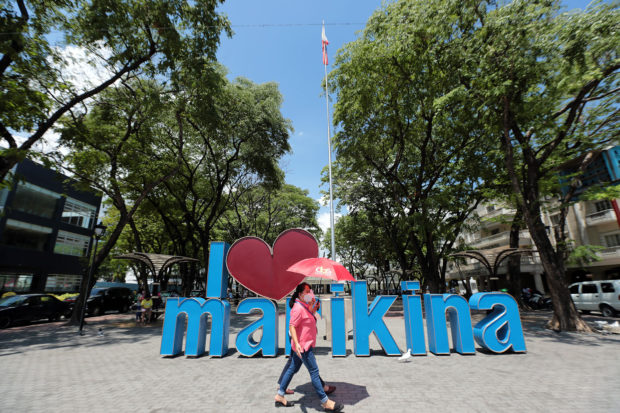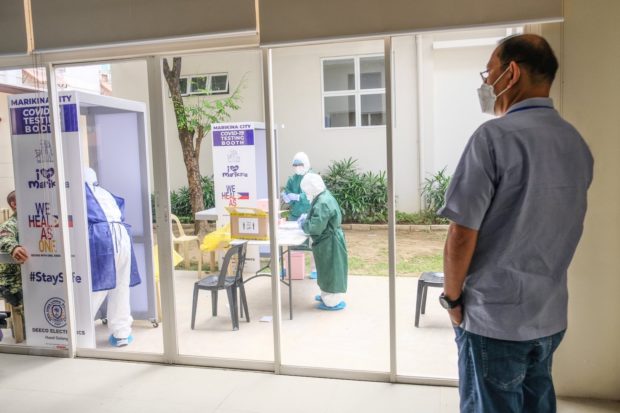Marikina, model city for disaster management, draws up plans for life after ECQ

CHANGE IS COMING According to Mayor Teodoro, the city will be redefined“socially, economically and health-wise.”—GRIG C. MONTEGRANDE
MANILA, Philippines — Marikina City is no stranger to crisis.
Hemmed by the Sierra Madre mountain range, the low-lying eastern city has long functioned as Metro Manila’s catch basin due to its geography. Nowhere was this more vivid than when Tropical Storm “Ondoy” plunged much of Marikina underwater in 2009 and left a trail of destruction. But not only did the city bounce back, it would also emerge as the country’s eminent model for managing disasters.
The pandemic unleashed by the new coronavirus disease (COVID-19) is unprecedented and demands a more sweeping response than even the worst flood. But it has brought out the same survival instincts that Marikina has successfully cultivated for years.
As of Saturday, Marikina had the slowest COVID-19 transmission rate among Metro Manila’s 16 cities. Its case doubling time of 8.32 meant it took an average of eight days before cases in the city doubled, better than all six other cities that had also recorded a decelerating caseload.
As mayors now search for a roadmap to safely reopen their economies following a two-month enhanced community quarantine (ECQ), they might benefit from again looking to Marikina as the city draws up its plans for the weeks ahead.
Article continues after this advertisementIn an interview, Mayor Marcelino Teodoro painted the broad strokes of life in the city after ECQ—how it would continue to flatten the COVID-19 curve, revive its economy and extend assistance to roughly 450,000 residents.
Article continues after this advertisementIf one thing was clear, just as it was in the wake of Ondoy, a post lockdown world would be less about restoring normalcy than reinventing it.“Some people think this will just last a short while but so many things will be redefined,” Teodoro said. “We will be redefined socially, economically, health-wise.”
It was a fact that the virus would not disappear with the ECQ so any “new normal,” he added, would include quarantine measures implemented on a permanent basis like physical distancing and the wearing of face masks in public places.
Mass gatherings will still be restricted, as well as activities centered on entertainment and leisure like gaming, until the virus has been eradicated.
More tests
Testing in the city will also be ramped up even as the lockdown winds down. Teodoro was one of the earliest and most vocal proponents of mass testing, figuring in a public clash with the Department of Health after it delayed the opening of the city’s COVID-19 testing center.
In March, weeks before other cities began partnering with hospitals to process test results, Marikina already put up its molecular laboratory specifically for COVID-19. The virus could be contained, Teodoro said, but only if people were tested and isolated.
He has clung to that messaging with the fervor of the devout. While some politicians have relied on bluster to navigate the pandemic, Teodoro has focused on the science. Successive crises have taught him that no dramatic flair can substitute for hard data when it comes to saving lives.

TESTING IS KEY As the city prepares to transition to a post lockdown world, it will ramp up testing as Mayor Marcelino Teodoro believes the virus can be contained only by testing and isolating the infected. —PHOTO COURTESY OF MARIKINA LGU
Decisions based on data“In a post quarantine scenario, any decision we make should always be based on data and evidence,” he said.
The local government unit (LGU) has thus asked the University of the Philippines School of Economics to analyze the impact of the work stoppage in the city so it could quantify the consequences of ECQ on displaced workers and propose the best course of action.
This will also enable the city to match those workers with new jobs, according to Teodoro.
The LGU will also gather data on businesses that closed and the drop in their revenues, which will, in turn, inform tax relief programs and other incentives to be crafted as Marikina gradually reopens its economy.
As it stands, city funding to loan facilities for small and medium enterprises has quadrupled.
Perhaps the most significant use of data now, though, is in its formidable link map, which has enabled the city to perform relentless contact tracing. For every confirmed case — there are currently 131 — it has traced at least eight close contacts who were immediately tested and isolated.
Test and isolateAll those living within a 20-meter radius of the carrier’s house are also tested, and up to 80 front-liners are being tested daily as well. This allows the LGU to test and isolate even those who are asymptomatic but can still be a vector for the disease.
Testing will be part of the city’s “regular health services” even after ECQ, Teodoro said.
The LGU has also found through the link map that 40 percent of the transmission in Marikina occurred not within communities but inside hospitals—which has influenced its building plans. The city is now working to open an eight-story treatment hub exclusively for respiratory ailments.
It has also scrambled to establish additional outlets for the most urgent services. Between six to eight more social welfare offices will be added to the current two. Marikina’s lone senior citizens’ office now has three additional sites as well.“Our priorities have changed,” said Teodoro, who had to weed out cultural activities and smaller infrastructure projects to realign funding to health and social welfare.
Keep money inside city
A policy is now in place that all government suppliers must be based in Marikina to keep money flowing within the city. The LGU is also looking into buying shoes en masse from local shoemakers to be distributed to public school students and city employees.
This will help shore up the shoe industry, a pillar of the local economy that employs up to 10,000 residents.
Those hit hardest by COVID-19 can now also secure up to P100,000 in medical assistance, compared to a cap of P25,000 before the crisis.
In keeping with the city’s strong working-class tradition, Teodoro has upped compensation for those at the front line of the epidemic, instituting hazard pay not just for health workers but equally essential workers such as garbage collectors.
The mayor has touted the city’s case doubling time as proof that its measures are working. But he will also be the first to point out that residents are as integral as the government in the fight against COVID-19.
The psyche of longtime Marikina residents has been molded by both the memory of disasters past and the threat of future catastrophe. As soon as the ECQ was imposed, Teodoro said residents similarly sprung into action and quickly followed government orders. In a city steeped in the language of crisis, they did not need to be told what was at stake.
“With our past experiences with crises and disasters, people know how to help one another,” said the mayor, whose home was also flooded during Ondoy. “Our secret is in the resiliency of our communities.”
For more news about the novel coronavirus click here.
What you need to know about Coronavirus.
For more information on COVID-19, call the DOH Hotline: (02) 86517800 local 1149/1150.
The Inquirer Foundation supports our healthcare frontliners and is still accepting cash donations to be deposited at Banco de Oro (BDO) current account #007960018860 or donate through PayMaya using this link.